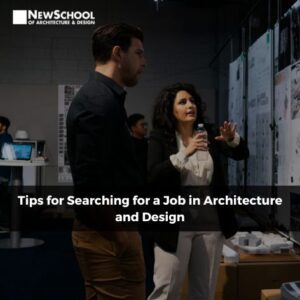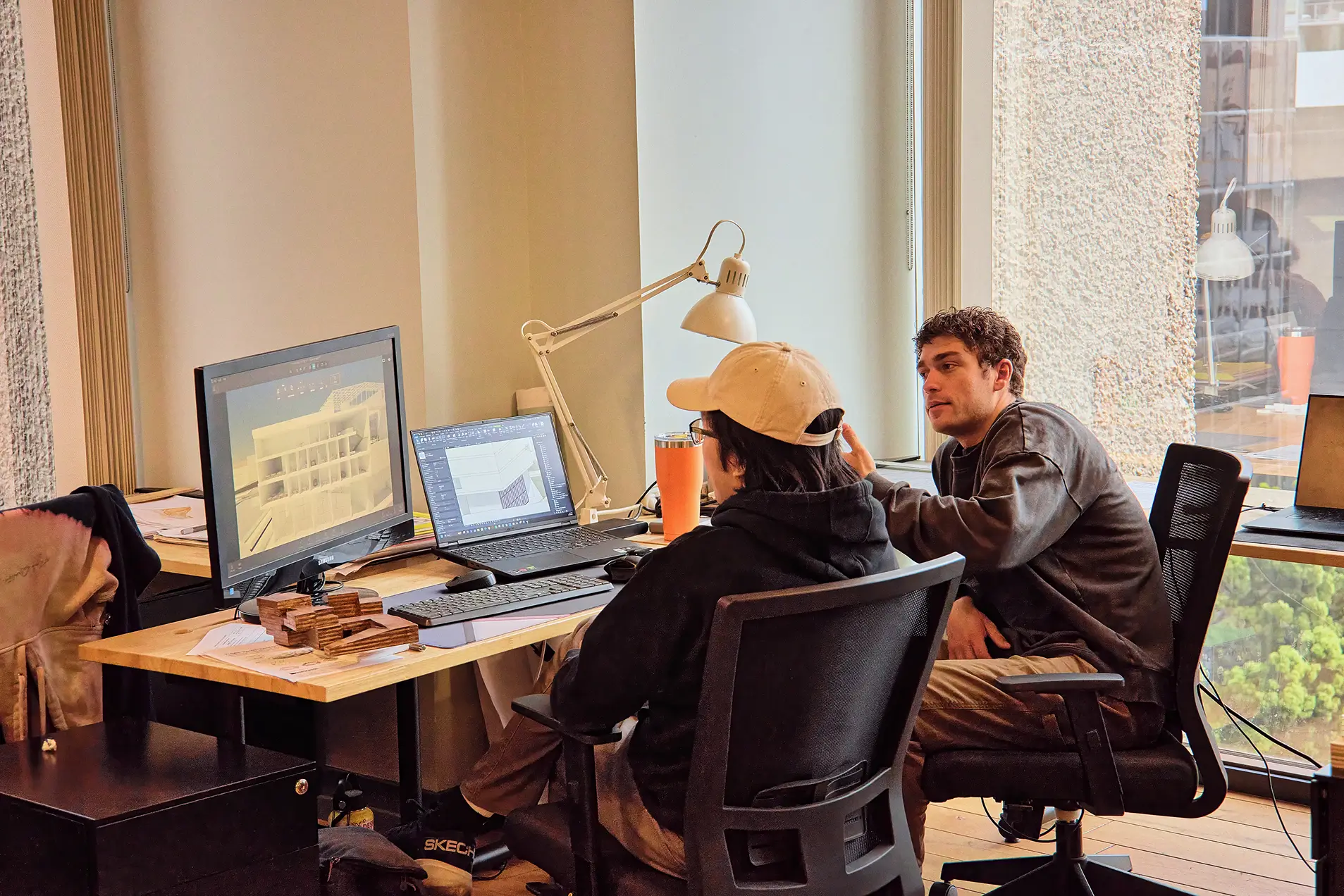Finding a job in architecture, interior, product, or graphic design-related fields can be a challenging process. The market is highly competitive, with thousands of skilled professionals vying for the same opportunities. However, with the right approach, resources, and mindset, you can establish your career as a professional designer and pursue your passion. This blog post will offer job search tips for architects and designers to help you stand out amongst the competition.
Architecture and Design Job Market Trends
The job market for architecture and design-related professions is vast, with numerous subsectors and related niches. Career paths are diverse, offering aspiring designers limitless opportunities to achieve their professional goals.
The Bureau of Labor Statistics predicts a 3% growth in employment for architects from 2021 to 2031, with 3,300 new jobs expected. Related disciplines such as Interior Architecture Design, Parametric Architecture, and Hyper-Formative Architecture offer tremendous potential based on your area of interest and specialization. The same 3% growth is predicted for Industrial Designers, with 900 new jobs, while digital design has growth estimated at 23%, with 45,500 new jobs.
How to Find a Job in Architecture & Design
Whether you’ve just graduated from design school or are a seasoned professional, these tips can help make the search for an exciting career in the complex world of design simpler.
Start with a Self-Assessment
The first step in finding a job in architecture and design is to understand your goals, skills, and interests thoroughly. What type of work do you enjoy doing? What are your strengths and weaknesses? Defining your goals and what you envision for your future will give you a clear idea of what you’re looking for, and you’ll be better equipped to focus your search on the opportunities that are the best fit.
Create an Impressive Portfolio
Professional designers agree that the portfolio is one of the most important documents you will need in your job search. This portfolio should be creative and reveal your talent and skills both related to software and design thinking.
Your portfolio must be able to visually represent how you think through a design problem, while revealing your process. Be bold but keep it simple! Use typography and carefully think about the balance and layout of your documents. Create a digital portfolio in spread format that you can email the employer, but also have a page version you can print and add to a prefabricated portfolio. Use negative space wisely which can allow for visual breathers in-between projects. Utilize contrast when there is a specific concept you are wanting your reader to focus on but do not overdo it.
For your resume, have a strong profile as firm owners typically look at resumes for only 20 seconds. Incorporate action verbs throughout your experience and show measurable results and achievements. Do not forget to add Honor, Awards, Recognitions or Volunteer Work. If you have a project that was displayed at school say something like… “Hospitality Project recognized for excellence.” If you have a high GPA or received a scholarship, list it!
Your resume and portfolio should be full of vitality and experience. Depending on your respective discipline, whether furniture design, digital product design, zero net carbon architecture, or interior architecture, tailor your projects and case studies relevant to your specific industry or potential employer.
Check out our blog, Mastering the Art of Design Portfolios, to learn more!
Take Advantage of Career Services
If you’re approaching graduation or are a recent alumnus, utilize the resources available at your university. They’re designed to help you succeed during your formal education and beyond, including successful job placement.
Build a relationship with your school’s Career Services Office to learn about networking opportunities, interview prep, career-building strategies, and advice on how to market yourself effectively in the eyes of prospective architecture and design firms.
Gain Internships
A crucial step in your professional journey is gaining experience and exposure so you can add these projects to your portfolio. During your formal education, you’ve acquired the foundational skills for your future career, but internships are a supplication that deepens the practical knowledge of an aspiring designer.
While a degree in architecture and design studies gives you the tools and skills to adapt to a rapidly changing environment, demonstrating your creative-thinking abilities and applying what you’ve learned in the real world is paramount.
Networking for Architecture and Design Jobs
Networking is essential in any job search, but particularly so in the architectural and design professions. Attend industry events, workshops, conferences, and professional organizations, or leverage your university’s connections to meet people in your field, learn about new developments, and make connections that can lead to new opportunities throughout your career.
Interview Prep
Once you’re invited for an interview, make sure that you’re well prepared. Research the firm and the position and practice answering interview questions specific to your focus area. It’s important to remember that your portfolio and resume can secure an interview, but how well you can communicate your skills, abilities, and value is the key to successful job placement.
One of the best job interview tips for recent graduates is to be confident and honest. Let the firm know you’re ready to take the first step in your career as a design professional, and explain that you are looking to grow, learn, and contribute to the company as its next innovator.
Negotiate Salary and Benefits
When you receive a job offer, don’t be afraid to negotiate compensation and benefits. Understand the appropriate salary levels for your specific industry and job function based on the Bureau of Labor Statistics, industry organization reports, and the Career Services Department at your university. Promoting a quality and fair salary from entry-level and above ensures you have a healthy fiscal future.
Stay Positive and Persistent
Finally, remember that the job search process takes time, and there may be setbacks along the way. The design industry is highly competitive, and rejection can feel devastating after all the work you’ve put in at university, internships, and your portfolio.
Be patient, persistent, and positive, and take every rejection as a chance to learn and grow. The right opportunity will come along if you keep at it! Remember to apply to multiple firms and do not just rely on one company to work for.
Secure Your Future at NewSchool of Architecture and Design
Our mission at NewSchool is to nurture and inspire design-minded learners to become citizen architects and designers, confirming our commitment to the principle that “higher education represents both a public good and a private benefit.”
Strong industry connections, collaborations, and cutting-edge design education are part of our daily curriculum, as well as real-world, skills-based instruction that prepares students for employment and successful careers post-graduation.
NewSchool’s historic job placement results have been in the 90% plus range and many grads are working with 6 months post-graduation. This success is a testament to our accredited architecture programs, global university network connections, and holistic approach to career development that nurtures our students from the start of their education to the advancement of their architectural and design careers.
Find your place at NewSchool and apply today!









 619-684-8800
619-684-8800

